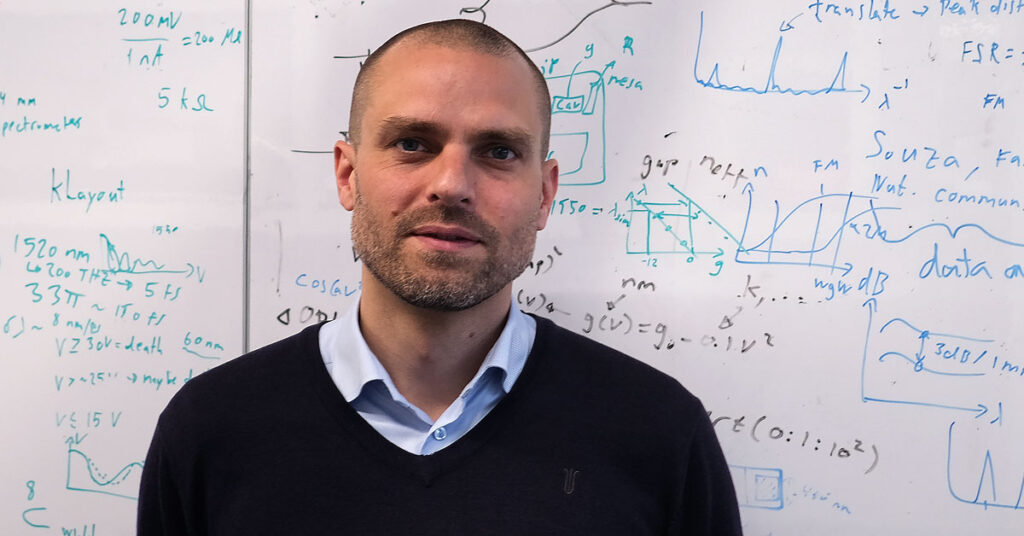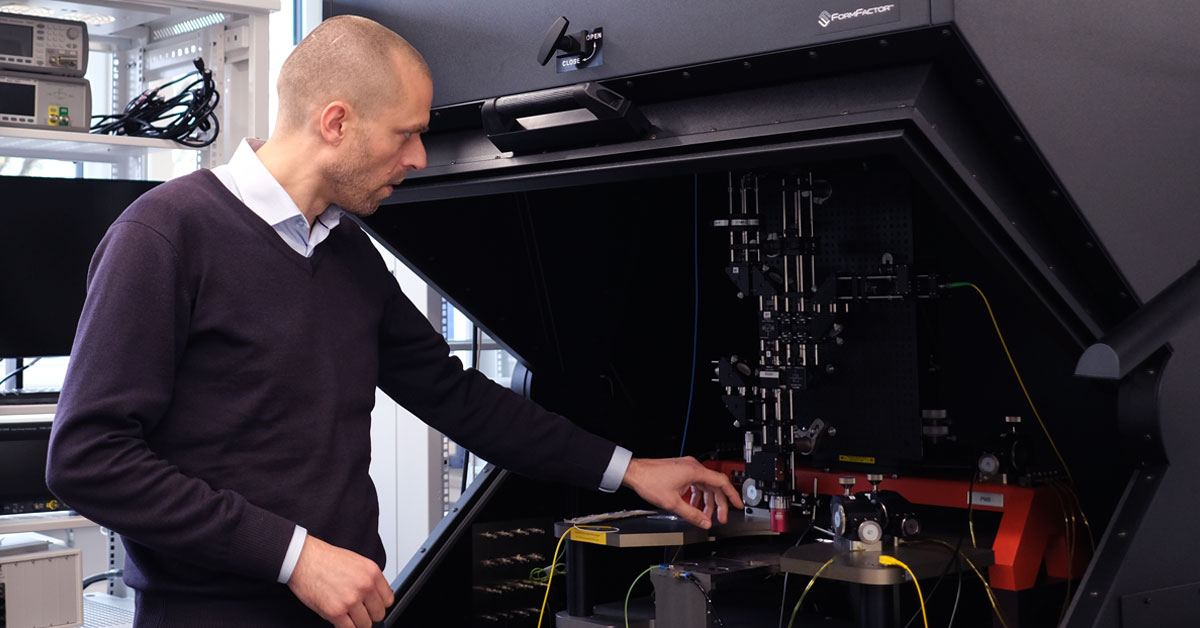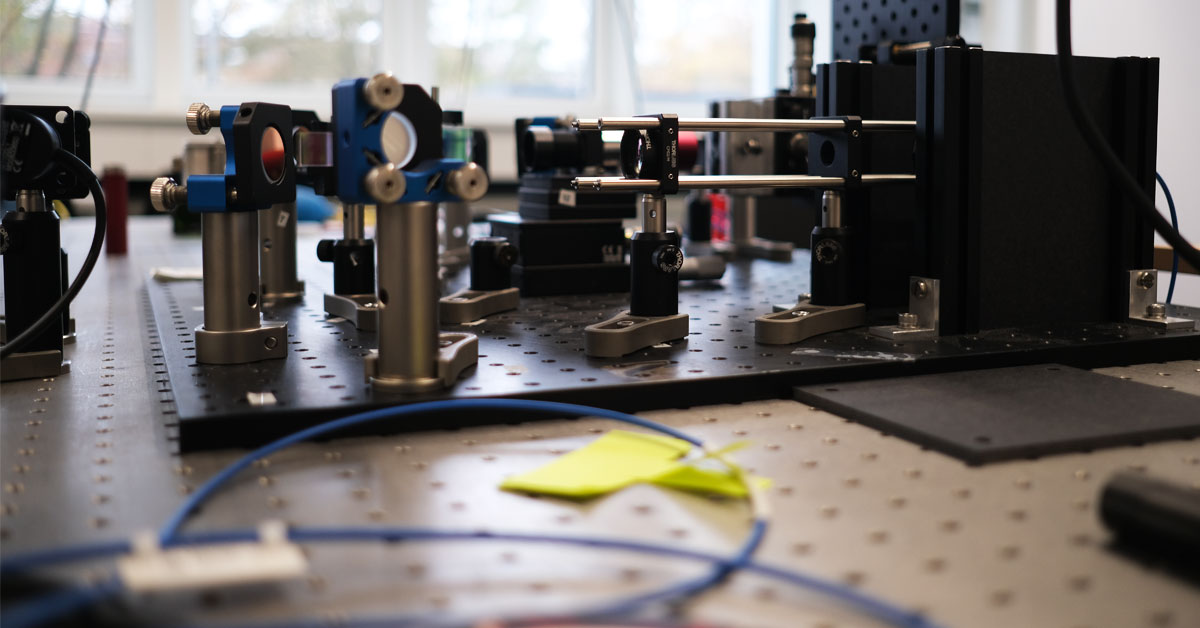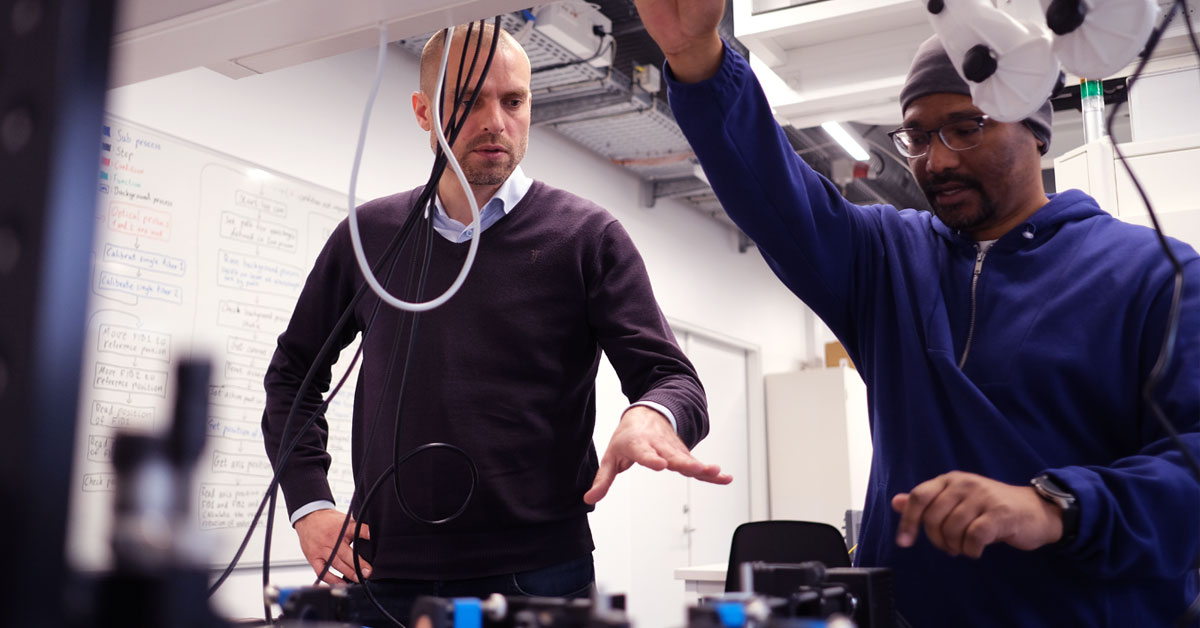The Center of Excellence NanoPhoton recently published momentous news about the development of a nanostructure that compresses light in a way that many physicists thought was impossible. This may have an impact on developing more energy-efficient computers and advancing quantum technology. In this interview, the head of the research group, Lector Søren Stobbe, gives an insight into which basic ingredients one needs to make such a groundbreaking discovery.

“We have succeeded in something that no one else in the world has done before, and we have been able to do so because everyone in the project is world-leading in their field,” explained Søren Stobbe.
“This goes all the way from the development of the material technology to the unique method that has calculated how we can design the patterns on which the structure is based.”
Stobbe continued by explaining that one of NanoPhoton’s strengths is that the work there is cross-disciplinary and thus the researchers produce very advanced results.
“The very idea of a Center of Excellence is to identify a complex of ideas and gather the relevant partners, and then see how far you can go.”
Stobbe also believes that the administration plays an important role in creating a framework for the center that can bring together the most talented researchers, Ph.D. students, and post-docs. The directors must have patience and give the researchers peace and time to make things work.
“I started my research group in 2018. We had a build-up phase with a limited number of publications. But I wanted to make something that was completely new, something that would push the boundaries, and it wasn’t obvious that this would be accepted by the administration. We worked hard because there was a lot to be done, and now we are beginning to see the results. I don’t believe this would have been possible if I had been asked to focus on short-term publications.”
Is it important?
The prerequisite for achieving world-class results is, in Stobbe’s opinion, is to have a clear goal and strong arguments for why the idea is important.
“You should not assess research on whether it is application-oriented or basic-research-oriented. You have to assess it on impact. Is this important? Basic research is in and of itself excellent, but the world is full of problems, and you can discuss where the research leads. It has to be honest, and it has to be important. For example, a Ph.D. student should end his studies knowing much more about his field than me and agree, yes, it was important.”
Hand in hand with the business world
That said, the commercial part of the research also means a lot to Stobbe. Basic research and the commercial aspect of research are not contradictory; many ideas can flow together.
He believes that we can use the expertise that comes from companies directly in the research, and as long as basic research is not justified by applications, there must be room for both.
“Perhaps it turns out that the research will have the greatest impact by starting a company or perhaps something else. It just must be real. It must have depth and create distance from known knowledge or technology.”
Read more about the breakthrough here





